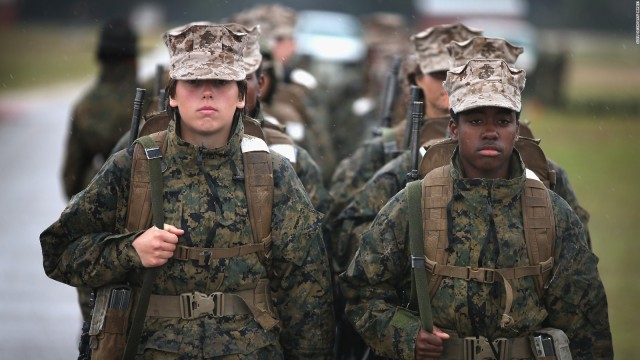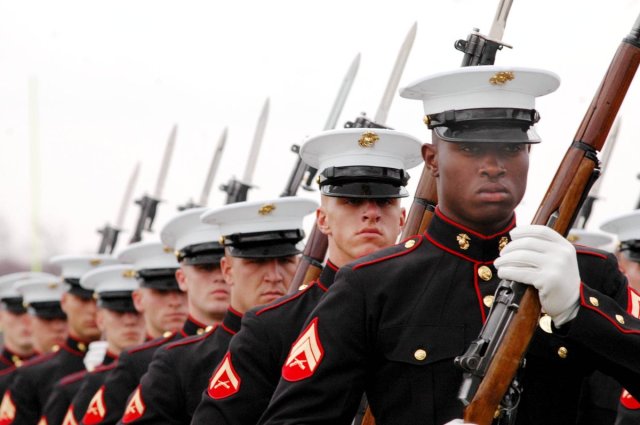Over the last several months our country has been experiencing a cultural reckoning around the issues of sexual harassment and sexual assault, especially in relation to women in the workplace. After allegations about Harvey Weinstein, a Hollywood executive and producer, became public we continue to witness the fall of top journalists, actors, and political leaders as hundreds of women and men come forward with their stories. Time magazine recently featured these courageous individuals, the “Silence Breakers”, as the 2017 Person of the Year. In our own personal social media bubbles, the hashtag #metoo gained traction in October. I watched it appear over and over again in my newsfeed from friends, family members, colleagues, and acquaintances. Yet, at a time when our country is watching idolized celebrities and leaders lose their prestigious positions and shatter their public credibility, we haven’t (and likely will not) be seeing the same thing happen with prominent military leaders. The cultural momentum building in civilian society won’t dismantle the layers of bureaucractic red tape that still exist in the military around issues of sexual harassment and assault.

The U.S. military’s problem with sexual harassment and sexual assault is well-established. The most recent studies and reports show that both military men and women experience sexual harassment, assault, and gender discrimination at higher rates than civilians. A 2014 RAND study estimated that 26 percent of active-duty women and 7 percent of active-duty men experienced sexual harassment or gender discrimination in the past year. The most recent Department of Defense data from the 2016 Workplace and Gender Relations Survey for Active Duty Members (WGRA) estimates that in the past year 4.3 percent of military women and .06 percent of military men experienced sexual assault. While DoD officials feel confident that reporting is increasing and rates of sexual assault are decreasing, only 32 percent of sexual assault victims are estimated to have reported their assault to the military. According to the VA, one study showed that 23 percent of female healthcare users had reported experiencing at least one sexual assault at some point during their military service. Rates of sexual harassment and sexual assault at the military service academies are also high, with both West point and the Naval Academy seeing an increase in reported sexual assaults on campus last year. CBS News recently released a story on their six month investigation into sexual harassment and assault experienced by cadets at the Air Force Academy (watch here, here, and here).
The prevalence of sexual harassment and assault in the military is both influenced and exacerbated by the unique social, cultural, and structural contours of the military institution. For one, the military has been and remains a masculine-oriented institution. Karin Dunivin characterizes military culture as oriented around a combat masculine warrior paradigm. The military is an institution that is comprised primarily of men with a culture that is deeply entrenched in masculinity. Military masculinity is not only associated with strength, independence, and assertiveness (traditional traits of masculinity), but it must support the specific mission of the armed forces–showing force, domination, and the controlled execution of violence. As an iconic institution in American society, the military is known for its role in ‘making men.’ Although combat roles are now open to women, warfighting is still thought to be a task and calling primarily for men. Culturally, masculinity is privileged (and that privilege is normalized) through devaluation and suppression of femininity. In the workplace, especially those dominated by men, women leaders find themselves in a catch-22: be brazen, bold, and assertive and you’re seen as a bitch or overly aggressive, but if you’re empathetic, vulnerable, and caring you risk being seen as ‘too soft’ or not taken seriously. This makes women in the military not only demographic minorities (representing 15 percent of the total active-duty force) but also cultural ones.
The military structure, executed through a strictly linear chain of command, entrusts its leaders with what is called “the burden of command”–an all-encompassing form of power and responsibility. Military leaders at every level are empowered to make decisions and choices on personnel issues, including those related to handling reports of sexual harassment and sexual assault. Commanding officers have wide ranging of discretion in how they choose to handle personnel issues, often facing difficult social situations without advanced professional or legal training. Commanders also have their own reputations to worry about, especially in an environment where there is little bandwidth for problems or mistakes. Sensitive or controversial personnel incidents at a command are often equated with poor leadership rather than deeper structural or cultural issues. In the military sexual harassment and sexual assault is a very localized problem: it usually happens in military environments and during working hours. In the 2016 WGRA the majority of servicemembers who experienced an incident of unwanted sexual conduct reported that it happened on the military installation or during duty hours. For sexual assault, 64 percent of servicemembers reported that it happened on a military installation and 27 percent of women and 45 percent of men said that the assault happened during duty hours. Thus, when military leaders hold significant power and discretion it is problematic for victims deciding whether they want to come forward, especially if it is someone in their chain of command or their commander who was the perpetrator. In cases of gender discrimination RAND’s 2014 study found that nearly 60 percent of the violations were committed by a supervisor or unit leader.

The culture of masculinity and the structure of leadership in the military both contribute to the high rates of retaliation that victims and survivors of sexual harassment and assault report. In DoD’s WGRA study, 69 percent of respondents indicated at least one negative experience associated with reporting their sexual assault. Accounting for the context of those negative repercussions 38 percent were considered circumstances that are prohibited by military law. In the recently released CBS report about sexual assault and harassment at the Air Force Academy, a former cadet describes how her assailant was only verbally reprimanded for “conduct unbecoming of an officer” and no further actions were taken against this individual. The retaliation, or fear of retaliation, against the victim leaves many military victims pondering whether they should come forward or not; deliberating whether it will ruin their careers or professional reputations. Some have described that the backlash from leaders and peers when they do report is more painful and traumatic than the actual harassment or assault incident itself.
Amidst this newfound cultural moment in American society, the military has a familiar history with public sexual harassment and assault scandals. There’s actually too many to cover here (it could be its own separate post). However, some notable instances are:
In the early 1990s, the Tailhook scandal exposed the dark side of the Navy and Marine Corps aviation community when 90 servicemembers (83 women and 7 men) were sexually assaulted at a conference in Las Vegas. While the Secretary of the Navy resigned and other officers were formally punished, critics questioned whether enough was done to address the underlying factors that allowed this incident to transpire.
The 2012 documentary film “The Invisible War” chronicled the continued pervasive problems in the post-9/11 military with sexual harassment and sexual assault, particularly focused on the climate at the Marine Barracks Washington, an elite Marine Corps unit. This film in particular focused on the extensive retaliation victims faced when they tried to report issues of harassment and assault to their command. Since the airing of this documentary the military has taken steps to improve its handling of sexual misconduct and tried to increase and encourage reporting of incidents.
Most recently in 2017 the Marines United scandal surfaced, exposing a Facebook group of Marines posted nude photos with lewd comments of fellow active-duty women Marines and civilians, including information about where they were stationed and what units they were assigned to. The fallout of this scandal is still unfolding, but new language has been added to the Uniform Code of Military Justice addressing the nonconsensual or unlawful distribution of intimate images.

Last month Senator Kirsten Gillibrand reintroduced the Military Justice Improvement Act, a bill she had previously introduced in 2013 following the public conversation after the Invisible War documentary. This bill would grant military prosecutors decision-making authority in cases of serious criminal activity, including sexual assault, relieving military commanders’ decision on whether these cases should go to trial. The goal of this legislation is to build an additional independent legal professional in to the justice process, allowing for the prosecution of sexual assault outside the chain of command structure. In 2011, similar legislation was introduced as the Sexual Assault Training Overnight and Prevention Act but also never gained serious momentum. These bills are one example of how the fight for greater justice in the military is still alive. It is also an example of how more needs to be done to rectify and address the specific institutional structures that allow high rates of harassment and assault in the military to persist.
2017 started the conversation about the corrosive and persistent abuses of power (largely) targeting women festering in American workplaces, among Hollywood’s elite, and in the highest levels of American government. In the past two months we’ve seen swift actions against those who are accused–immediate firings, dismissals, or quick resignations. As more victims are heard and taken seriously it has encouraged others to speak out. But in this current moment military leaders won’t be quickly fired, relieved from duty, or forced to resign/retire like their public/civilian counterparts. The bureaucratic red tape and the continued denial and dismissal of the real problem of sexual harassment, assault, and retaliation in the military continues, giving too much power to the perpetrators and not enough credibility to the brave servicemembers who come forward to tell their story. But just because the walls of the bureaucracy are hard to dismantle doesn’t mean the work isn’t worth doing. As we continue to openly discuss these issues in the public sphere, we also need to talk about its prevalence in the military and veteran community. Men and women who have experienced sexual harassment or assault while serving their country should continue to speak out, but the burden doesn’t rest there. It also falls on all who serve and have served to speak up, demanding that the institution take stock of its leaders, its values, and its priorities.
